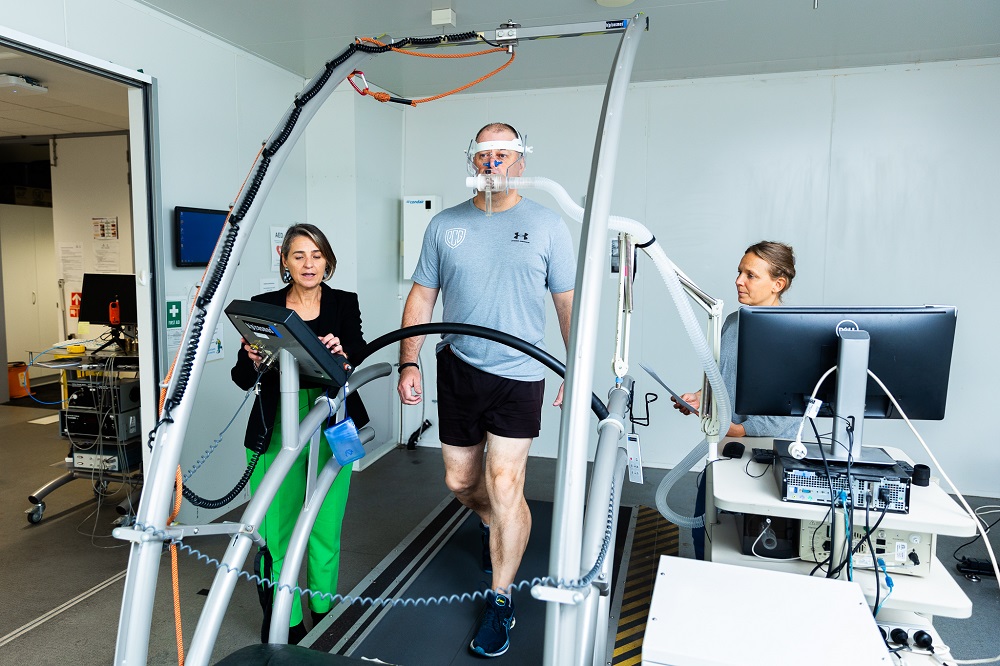Emma Larouche
7 September 2023: A new study by University of Canberra researchers aims to determine physical activity thresholds for people living with heart disease, to prevent repeat cardiac events and help more people live longer, healthier lives.
Funded by an ActiGraph Digital Endpoint Accelerator Research (DEAR) Grant and a University of Canberra Faculty of Health Seed Grant, the research team is using ActiGraph accelerometers, which are wearable devices worn around the waist and wrist to determine physical activity frequency, duration, and intensity.
The team comprises researchers from the University’s Health Research Institute (HRI) and UC Research Institute for Sport and Exercise (UCRISE). They are joined by Amanda Lonn from the Swedish School of Sport and Health Sciences, who received a Swedish Heart Lung Foundation post-doctoral fellowship to spend two years at the University.

Associate Professor of Physiotherapy, Dr Nicole Freene, who specialises in cardiac rehabilitation and physical activity research, says current physical activity guidelines, which encourage us to achieve at least 150-minutes of moderate-to-vigorous intensity physical activity per week, may not be suitable for those with clinical conditions like heart disease.
“Physical activity plays a vital role in preventing repeat cardiac events, and the levels that someone living with heart disease may need to improve health outcomes may be different to a healthy person, and we want to get a better understanding of that,” Dr Freene said.
“Researchers haven’t been able to determine the accurate relationship between physical activity and health outcomes to develop disease-specific physical activity guidelines for people with heart disease, which may differ from the public health guidelines.”
The team is seeking participants who are living with coronary heart disease to participate in the trials from now until the end of 2024. They would be required to attend a single, two-hour session where accelerometers and measurement of oxygen consumption (intensity) will be used to determine more accurate measurement of physical activity intensity levels for people with heart disease.

“They will spend 15 minutes walking at an incremental pace on a treadmill and then do other daily living activities, like sweeping the floor or watching television, while we measure oxygen consumption and physical activity using accelerometers,” Dr Freene said.
“Since participants have a history of heart disease, they will need to obtain medical clearance before they attend a session, which can be done through their GP or cardiologist.”
With heart disease affecting more than four million Australians, it’s hoped the outcomes of the trial will have an impact at home and around the globe.
“It’s really important that individuals living with heart disease are physically active, as they are more likely to die from any cause, or experience repeat cardiac events, if they are inactive,” Dr Freene said.
“We want to generate new knowledge to be able to determine exactly how much physical activity they need to do to reduce their risk of having a heart attack and enjoy better quality of life overall.”
Anyone interested in taking part in the study can register here.


